Many of our STH readers have seen the series we are running at this point on SFP+ to 10Gbase-T converter modules. We now have a unit that looks and performs very similarly to the FlyFiber SFP-10G-T-C we recently reviewed. This one is the FiBay 10G-SFP-T-CI. This FiBay 10G-SFP-T-CI is another Cisco coded module. The module is rated to convert a SFP+ slot to a RJ45 10Gbase-T slot and span up to 30m of cable distance. Our FiBay unit had Nbase-T support which is not officially in the spec sheet, but this type of discovery is what we are trying to find with our series.
FiBay 10G-SFP-T-CI SFP+ to 10Gbase-T Converter Overview
We purchased our FiBay 10G-SFP-T-CI from Amazon. A simple white box affair showcased the module with the only labeling at the rear of the box. The box itself is the same size and shape as the FlyFiber SFP-10G-T-C.
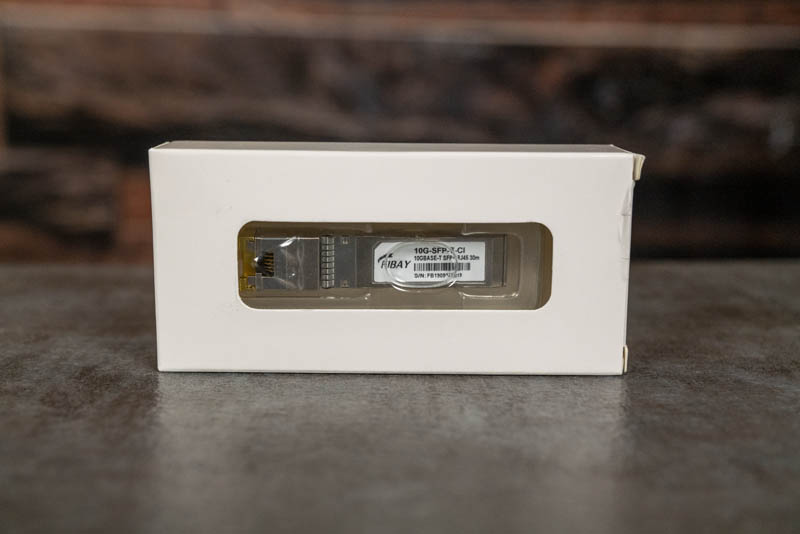
A rear label discloses the country of origin, however, that is not printed on the module itself. That is not the only marking difference. One can see that the box and module itself do not carry FCC and other markings making us wonder if this is even OK to sell per Amazon’s regulations.
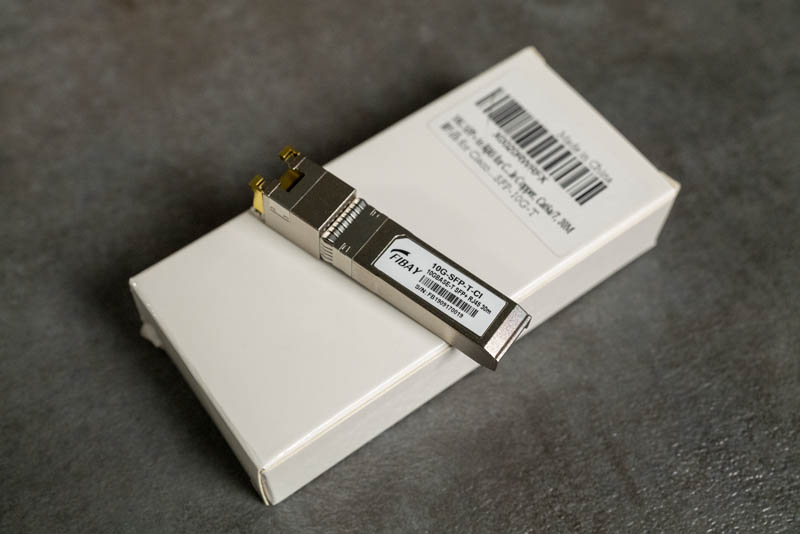
These units plug into switch SFP+ ports and can provide up to 10Gbase-T connectivity at 30m. Aside from 10Gbase-T, they can also provide 2.5GbE and 5GbE in Nbase-T which we found when testing. Of note, this Nbase-T functionality is not in the spec sheet but we are finding support in a slim majority of modules we are testing in this series.
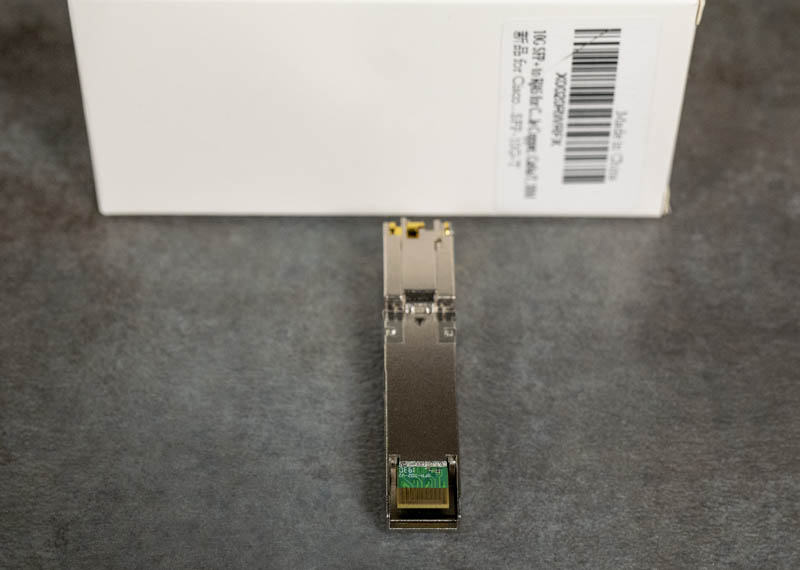
Overall, the unit looks like a SFP+ to 10Gbase-T transceiver. This is a similar casing to many modules we have seen in the past. We like that the SFP+ and 30m distance limit at 10Gbase-T speeds specs are printed directly on the label. That is always helpful when one is looking through a set of spares.
You may see the FiBay 10G-SFP-T-CI advertise that it is a replacement for Cisco SFP-10G-T-S modules. That fact is printed directly on the label. The unit is not just for Cisco switches. We tested it with MikroTik, Netgear, and QCT switches as well and the modules worked.
FiBay 10G-SFP-T-CI Nbase-T Support
As we mentioned earlier, the official spec says this is simply a SFP+ to 10Gbase-T converter for distances up to 30m. There is no mention of Nbase-T, 2.5Gbase-T, 5Gbase-T, 2.5GbE, or 5GbE in the specs, nor on the device or its contents. We have now found some SFP+ to 10Gbase-T converters support Nbase-T while others like the 6COM 6C-SFP-10G-T and ADOP 10GMS-30M-T units do not.
First, we tried the FiBay unit in a MikroTik CRS326-24S+2Q+RM Switch connected to an Aquantia AQtion 10Gbase-T adapter on a 20m CAT6 cable we had:
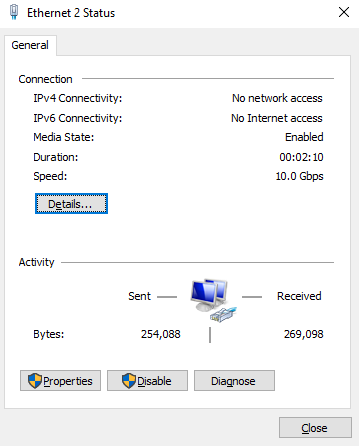
As you can see, we linked at 10Gbase-T speeds without issue.
We then selected a 5Gbps rate on the Aquantia AQtion NIC and again, we saw a 5GbE link:
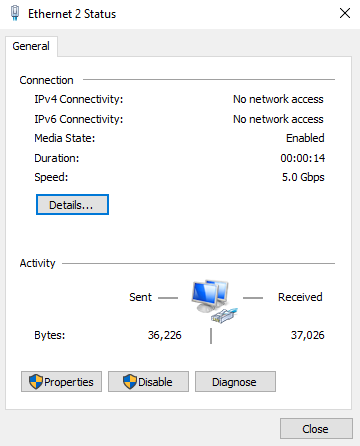
We then swapped NICs just to get some diversity and used the TRENDnet TEG-25GECTX 2.5GbE adapter using the Realtek RTL8125. We also verified this with the Syba 2.5 Gigabit Ethernet PCIe NIC that uses the same controller.
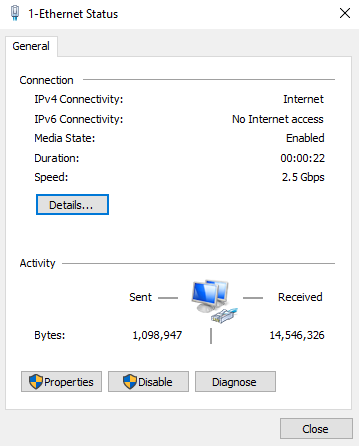
Here we saw a 2.5Gbps link as we expect. Even though it is not on the spec sheet, the FiBay adapter, like the MikroTik, FlyFiber, and Ipolex units, supports 2.5Gbps and 5Gbps network speeds.
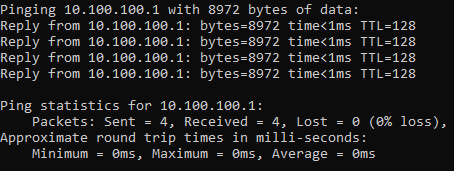
We also received requests to test Jumbo Frames on these modules so we have started to do that. Here you can see the large packets passing even though we are using the -f switch in our ping command.
FiBay 10G-SFP-T-CI Performance
We ran a few NAS tests to a SFP+ SSD NAS from a workstation with a 2.5/5/10Gbase-T adapter as well as a SFP+ adapter to see the impact of the FiBay 10G-SFP-T-CI version of the SFP-10G-T-S running in a MikroTik CRS309-1G-8S+IN switch.
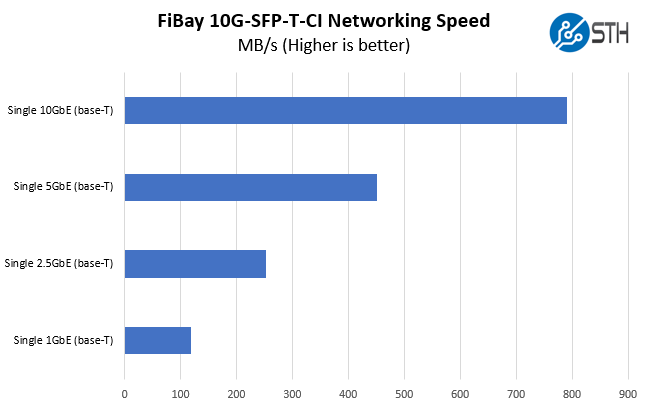
Here we see virtually identical performance to the Ipolex, HiFiber, and FlyFiber units which is what we would expect if they are indeed the same modules. It is also slightly faster than the 6COM and ADOP units.
Final Words
As regular STH readers may have seen, we are running an entire series on these modules. Although we have four linked above, this is the sixth of nine modules we have tested as of me writing this. There are some slight variations between the modules but 10Gbase-T performance is relatively similar. They all run very hot in switches because they are using what is relatively a lot of power in the 2W range each.
The FiBay 10G-SFP-T-CI has a lot going for it. As a Cisco SFP-10G-T-S coded module, it works in Cisco as well as at least MikroTik, Netgear, and QCT switches. That is a lot of SFP+ ports that it can potentially access.
With 2.5GbE and 5GbE support, this makes the module very versatile. We have found several similar modules that do not have this capability. Jumbo frames seem to be a feature that all of these modules support.
Pricing is often 25-30% higher than some of the other generic modules we have tested and is sometimes even more than the MikroTik S+RJ10 module. The lack of FCC and other regulatory certifications and markings on these units is worrisome and will be a show-stopper for many.
To us, this is a strange module. The feature set and packaging is very similar to the FlyFiber module. They are extremely similar in performance as well. Still, since this module is 25-30% more expensive than its peers (at the time of this writing), and with the lack of certification markings, we are left with one choice. We are going to have to suggest to our readers that they look elsewhere first even though this module provides more than it says it should.

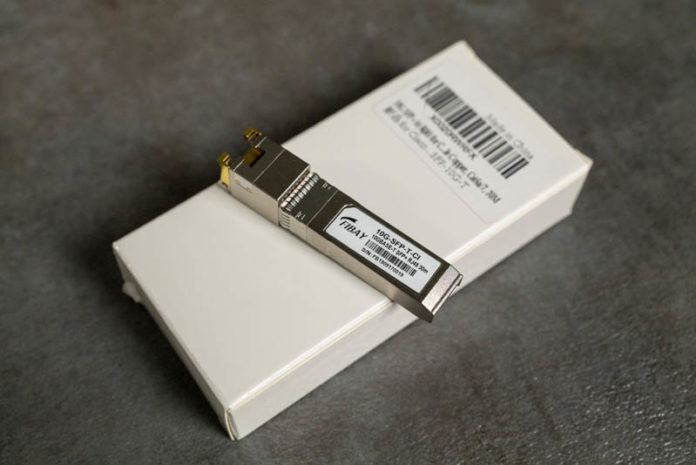


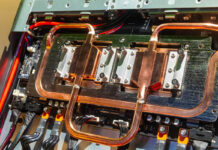
When something is not certified by Ajit Varadaraj Pai’s organisation doesn’t mean a lot.
Doesn’t that make it illegal to be sold on Amazon in the US?